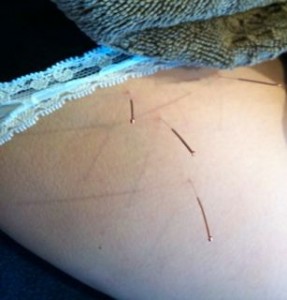Dry Needling

By Errol Lim, Physiotherapist
Dry needling has become more topical in recent years when talking physiotherapy treatment. Physios are always looking for new techniques and methods of treatment that can improve patient outcomes. The quicker we can get someone better, the better we feel, the better we “look” and more importantly, the better our PATIENTS feel. The problem for most people is the fear of the needle.
1. Is dry needling better than other physiotherapy techniques?
Dry needling is just one of a multitude of treatment options, our physiotherapists have in order to get desired outcomes with their patients. As a treatment modality, it is no better or no worse when compared to other modalities. It would only seem better if a patient has had numerous other types of physiotherapy treatment and it so happens that dry needling gave them the best result. Like many things in this world, there is no hard and fast rule about when to use dry needling as every patient is different. The art for a physiotherapist is then to know when dry needling can be most effective.
2. So, when does a physiotherapist decide to use dry needling?
Dry needling is most effective for patients who have sensitivity (or do not like) to other treatment modalities such as massage or trigger pressure therapy. These techniques can often cause pain upon a physiotherapist applying pressure to the patient’s skin/body. Hence, dry needling allows a physiotherapist to release tension or trigger points in muscles without the discomfort of finger/hand pressure. Typically, patients with conditions such as fibromyalgia or other arthritic conditions as well as patients with severe pain such as lower back disc and whiplash injuries may benefit.
In other patients, dry needling can have a better effect than massage as the needle is able to reach deeper fibres of a particular muscle group. The only way to know this is to have both treatments. The physio will then be able to make this decision with the patient. Many athletes tend to fall into this group as they are always looking for ways to recover quicker from training and competition.
Hope this post helps to alleviate some fears when it comes to deciding whether dry needling is a suitable treatment technique when performed by physiotherapists. If you still have some apprehension, let us know and hopefully we can help you through this decision making process.
Errol Lim is a physiotherapist and a director of BJC Health.
BJC Health provides a connected care multidisciplinary team philosophy to deliver positive lifestyle outcomes through a holistic approach to those with degenerative & inflammatory arthritis, tendon injury and lifestyle diseases. Our clinics are located in Parramatta, Chatswood and Brookvale. Contact us.
This blog focuses on arthritis-related diseases, healthcare in general, and our Connected Care philosophy.

